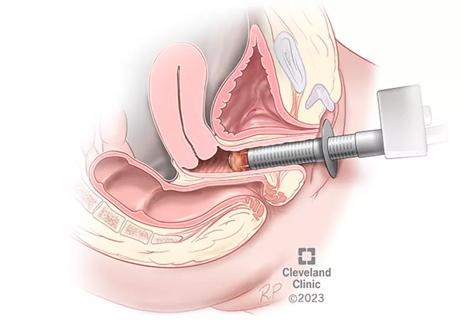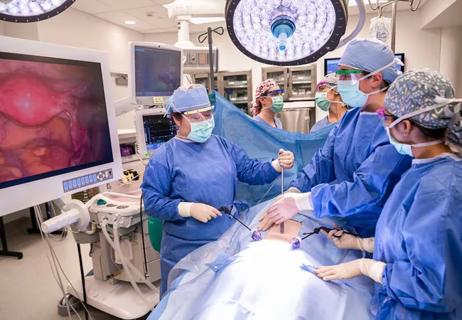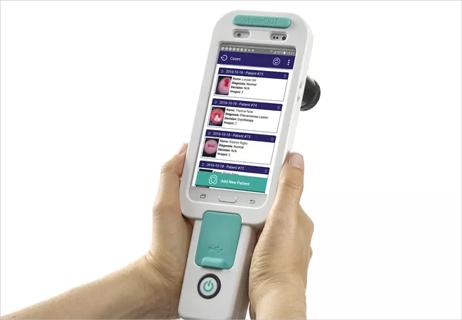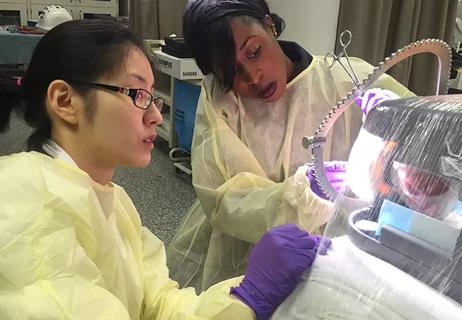Advertisement
High physician/patient convenience and satisfaction cited
“I’m expecting that in four years, most of my practice will be virtual,” reports Holly Thacker, MD, Professor and Director of Cleveland Clinic’s Center for Specialized Women’s Health. “As a women’s health menopause specialist, most of what I do clinically is intellectual—talking with patients, ordering tests, reviewing lab results and prescribing medications—rather than hands on, so telemedicine works really well and allows me to see patients who might not be able to make it into the office for follow-up appointments.” In addition, she notes that demand for virtual healthcare is expected to increase given that younger generations are already doing everything from their shopping and banking to dating online.
Advertisement
Cleveland Clinic is a non-profit academic medical center. Advertising on our site helps support our mission. We do not endorse non-Cleveland Clinic products or services. Policy
Dr. Thacker began embracing telemedicine two years ago. She maintains a physical practice in Cleveland but is also licensed to practice in the state of Florida, where she has observed many menopausal women are without care.
Dr. Thacker now blocks off part of her daily schedule to conduct virtual visits, although she is also amenable to conducting unscheduled telemedicine visits in-between her office visits. Training to perform the visits was minimal, involving a quick run-through of the technology and how to retrieve patients from an electronic waiting room. Equipment for both the physician and patient consists of a cellphone, tablet or computer that has been loaded with Skype or another two-way video program. Most visits last about 10 minutes, involving routine follow-ups to review laboratory results or requests for medication refills. “I find virtual visits allow me to serve more patients, while reserving my office time for new patients,” she says.
Although not every patient encounter can be performed virtually and physicians whose practices are largely unscheduled are unlikely to adopt their use, the benefits of these visits for follow-up care are manifold, Dr. Thacker says:
As with any technology, there are some pitfalls associated with virtual visits, including the chance that the technology may fail to work on either the physician or patient side. In addition, it is essential that patient confidentiality is safeguarded, and visits are performed in a private, quiet environment where neither party will be disturbed.
To enhance the patient experience, Dr. Thacker refers all patients she sees in her office or virtually to Speaking of Women’s Health, a nonprofit online program of the Cleveland Clinic Center for Specialized Women’s Health that seeks to educate women to make informed decisions about health, well-being and personal safety for themselves and their families.
Advertisement
Dr. Thacker is also a proponent of eConsults, which permit physicians to consult with colleagues and obtain a specialist’s opinion on a case. This allows the requesting physician to give patients a fully informed evaluation of diagnostic conundrums and treatment options without the need for the patient to make additional appointments. “Traditionally, physicians have done casual check-ins with experts where they stop other doctors in the hallway to pick their brains about challenging cases,” she explains. “The eConsult is a more official, more comprehensive way of doing these hallway consults, which are invaluable to the practice of medicine. The consulting physician can review labs, tests and a patient’s chart and give an opinion via text or email rather than on the fly.”
Advertisement
Advertisement

Treatment being offered in cases where medical and hormonal management was not successful

Standardizing obstetrics and gynecology education while promoting patient safety

Automated visual evaluation of the cervix

Don’t miss this educational opportunity

The next evolution in MIS is coming sooner than you think

Limit radiation damage to ovaries without removing them

Trainees no longer need to “practice” on patients

Dr. Andreas Tzakis on the patient’s condition, the surgery and the road ahead